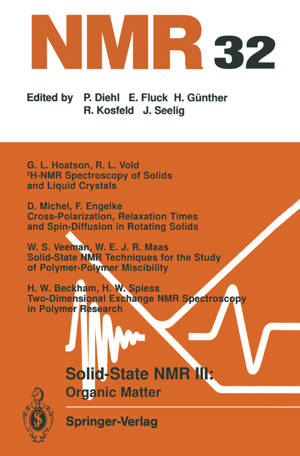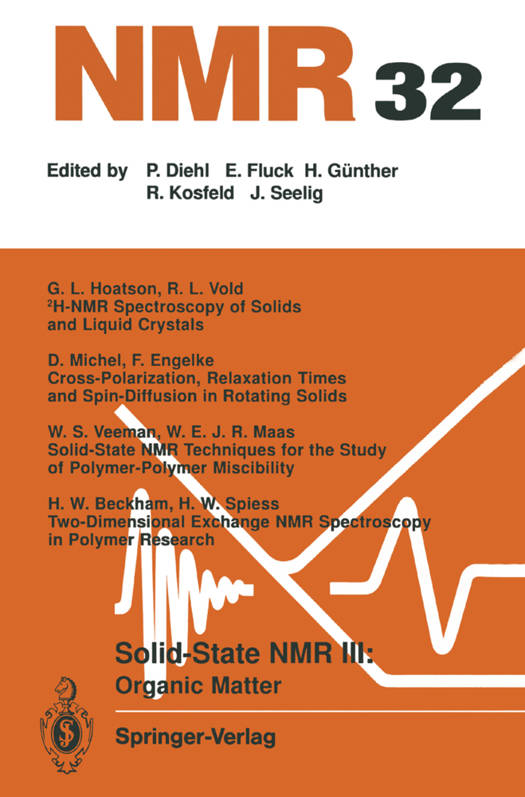
- Afhalen na 1 uur in een winkel met voorraad
- Gratis thuislevering in België vanaf € 30
- Ruim aanbod met 7 miljoen producten
- Afhalen na 1 uur in een winkel met voorraad
- Gratis thuislevering in België vanaf € 30
- Ruim aanbod met 7 miljoen producten
Zoeken
Solid-State NMR III Organic Matter
Organic Matter
€ 223,95
+ 447 punten
Omschrijving
Solid-State NMR is a branch of Nuclear Magnetic Resonance which is presently experiencing a phase of strongly increasing popularity. The most striking evidence is the large number of contributions from Solid-State Resonance atNMR meetings, approaching that ofliquid- state resonance. Important progress can be observed in three areas: Methodological developments, applications to inorganic matter, and applications to organic matter. These developments are intented to be captured in three volumes in this series, each of them being devoted to more or less one of these areas. The present volume on Solid-State NMR III is devoted mainly to organic matter. The recent developments of deuteron NMR and their applications are reviewed in the first chapter. Crosspolarization, MAS, and dynamic angle spinning are being explored for enhancement of information and sensitivity. In addition to the analysis of classical relaxation times and modern 2D spectra, detailed dynamic information becomes accessible from investigations of the relaxation time anisotropies. The second chapter examines cross-polarization in static and rotating solids under conditions of spin diffusion and thermal motion. The underlying dipole-dipole interaction is further exploited by the techniques described in the third chapter for studies of polymer-polymer miscibility. Short- range techniques are discriminated from long-range techniques based on spin diffusion. The use ofthese techniques is illustrated by a case study ofPMMAJPVF blends. The last chapter addresses novel z methods and applications of two-dimensional exchange NMR for investigations of relative molecular orientations, polymer morphology, molecular dynamics, and macroscopic molecular order.
Specificaties
Betrokkenen
- Uitgeverij:
Inhoud
- Aantal bladzijden:
- 213
- Taal:
- Engels
- Reeks:
- Reeksnummer:
- nr. 32
Eigenschappen
- Productcode (EAN):
- 9783642647512
- Verschijningsdatum:
- 28/09/2011
- Uitvoering:
- Paperback
- Formaat:
- Trade paperback (VS)
- Afmetingen:
- 156 mm x 234 mm
- Gewicht:
- 326 g

Alleen bij Standaard Boekhandel
+ 447 punten op je klantenkaart van Standaard Boekhandel
Beoordelingen
We publiceren alleen reviews die voldoen aan de voorwaarden voor reviews. Bekijk onze voorwaarden voor reviews.







